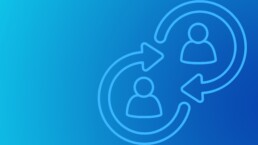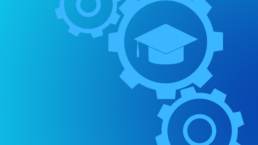Why ESG-Focused Companies are Viewed as Having Long-Term Value
Why ESG-Focused Companies are Viewed as Having Long-Term Value
By Staci Hegarty, M.Ed.
The integration of ESG principles helps companies create sustainable value, ensuring they are well-positioned for long-term success and resilience in a rapidly changing world.
But Why?
ESG stands for Environment, Social, and Governance. More specifically, how does your organization address environmental sustainability, take care of the humans who interact with the company, and ethically lead through the board, executives and directors?
Investors are increasingly favoring companies that demonstrate strong ESG practices. In a survey of 50 Fortune 100 companies, ESG-related disclosure in 10-K and meeting proxy statements has increased significantly since 2021. A robust ESG strategy signals to investors that a company is forward-thinking, resilient, and committed to long-term value creation. This can lead to greater access to capital, more favorable financing terms, and enhanced shareholder value.

ESG is Complex
The term ESG is most often used in relation to the interests of investors but applies to the overall strategy of every organization. ESG integration, cited by almost six in 10 (59%) global investors, remains the most used implementation strategy. Depending on the industry, one of the three categories may be more important than the others. A mining company is going to focus more on the environmental impact of their work than an accounting firm. A company with vendors in developing nations will have greater concerns about child labor than an insurance company. A large publicly traded organization will prioritize corporate governance differently than a small construction company. The priorities may be different, but the importance of each of these three factors cannot be overstated. ESG-focused institutional investments are projected to reach $33.9 trillion by 2026.
ESG factors are crucial in identifying and mitigating risks that can significantly impact a company’s long-term viability. Environmental concerns like climate change can lead to regulatory changes, operational disruptions, and increased costs. Social factors, such as labor practices and community relations, can affect brand reputation and customer loyalty. Strong governance ensures transparency and accountability, reducing the likelihood of scandals and financial mismanagement.
Long-Term Value Creation
ESG is not just about doing good—it’s about creating long-term value. Companies that prioritize ESG factors are better equipped to innovate, adapt to changing market conditions, and build sustainable business models. This, in turn, leads to enhanced financial performance, competitive advantage, and long-term success.
In addition, consumers today are more socially and environmentally conscious than ever before. A significant 76% of consumers would stop buying from companies that neglect environmental, employee, or community well-being. Consumers are increasingly demanding that companies align their operations with ethical and sustainable practices. Companies that integrate ESG into their business models can attract and retain customers who prioritize sustainability, ultimately driving sales and brand loyalty.
Integrating ESG into your strategies is not just a matter of corporate responsibility—it’s a business imperative. By focusing on ESG, leaders can protect their organizations from risks, attract investors, meet regulatory requirements, satisfy consumer demands, and build a motivated workforce, all while ensuring long-term value creation. In an increasingly complex world, ESG is the roadmap to sustainable success.
5 main reasons why ESG-focused companies are viewed as having long-term value:
- Employee Safety and Retention: By investing in their employees’ safety and well-being, companies can reduce turnover rates and maintain a skilled, motivated workforce. This stability contributes to maintaining best practices and operational efficiency over the long term in addition to increasing morale. By embracing ESG, companies can attract top talent, foster a positive workplace culture, and reduce turnover rates.
- Waste Reduction and Efficiency: Investing in sustainable practices, such as reducing waste, becomes ingrained in the company culture. This leads to operational efficiencies, cost savings, and a stronger bottom line.
- Regulatory Compliance: Staying ahead of regulatory changes means these companies are better equipped to manage and respond to new requirements. This proactive approach ensures compliance not only with regulations but also with evolving market and customer expectations. In addition, governments and regulatory bodies around the world are implementing stricter ESG-related regulations. Companies that proactively address ESG issues are better positioned to comply with these regulations, avoiding penalties and maintaining their license to operate.
- Innovation and Problem-Solving: ESG-focused companies often excel in innovative problem-solving. Their commitment to addressing environmental and social challenges fosters a culture of creativity and adaptability. This agility allows them to quickly respond to changes in the market, supply chain disruptions, and other business factors.
- Reputation and Trust: Companies that prioritize ESG build stronger relationships with stakeholders, including customers, employees, and investors. This trust and positive reputation can lead to increased customer loyalty, better employee engagement, and more attractive investment opportunities.
The Time is Now
By embedding ESG principles into your core operations, you not only enhance your company’s resilience and long-term value but also build trust with stakeholders. Ensure your current ESG initiatives are effective, well-documented, and visible both internally and externally. This transparency strengthens your reputation and demonstrates your commitment to sustainable and ethical practices, positioning your company as a leader in today’s rapidly evolving market.
An integrated approach is essential to ensure the right information is available and targeted to all stakeholders. This approach helps align your ESG goals with your overall business strategy, ensuring that everyone from employees to investors understands and supports your initiatives. By doing so, you create a cohesive and informed environment that drives sustainable success.
How We Engage 1, 2, 3
ESG factors are crucial in identifying and mitigating risks that can significantly impact a company’s long-term viability. Envision RISE has the expertise to lead your organization’s development and execution of ESG goals and initiatives.
- Step 1: Collaboratively, we assess and understand your current state.
- Step 2: Together, we conduct a gap analysis aligned with your goals and objectives.
- Step 3: We define both near-term and long-term action plans, focusing on quick wins.
- Step 4: We outline an internal and external socialization and visibility plan.
Schedule your free 30-minute consultation here:
https://calendly.com/staci-h/30-minute-consultation
If we find that we’re a good fit, we’d like to offer you 5 hours of free services. Should you wish to continue, you’ll receive 25 complimentary hours of support with every purchase of 100 bulk hours . Offer is valid through November 31st, 2024.
Visit our website at https://envisionrise.com.
The Little Things Matter in Employee Retention
The Little Things Matter in Employee Retention
By Staci Hegarty, M.Ed.
The statistics are well known. It takes 50% (or more) of an employee’s annual salary to replace them if they leave. Unemployment is at a 50-year low. Competition for talented employees is fierce. Baby Boomers will all be at
traditional retirement in 2030, contributing millions of roles to the labor shortage. Companies are struggling with work-from-home policies, the introduction of AI into our daily lives, skyrocketing health insurance costs, and the need for a global workforce.
On average, workers leave companies after only four years. The days of decades of loyalty to an employer are gone. This is not because employees are fickler, but because the grass may truly be greener somewhere else. Few jobs reward that kind of loyalty anymore. Pensions only exist in a handful of industries. 401k matching is becoming rare. Employees have been prioritizing work-life balance more than ever. Few families can afford to have a stay-at-home parent, which means working parents must walk a tightrope between their professional goals and their personal obligations. An annual cost of living raise will not be enough to retain high-potential or high-contributing employee.
Rather than compete for new employees, it is more cost-effective and productive to invest in your existing employees. Our jobs are more than a paycheck. They are where we spend about a quarter of our lives. Studies show that our boss has a greater impact on our mental health than a doctor or therapist, with influence that is comparable to that of our life partners. Leaders who are connected to their employees on a personal level create one of the most important aspects of a healthy workplace, a sense of belonging for their employees. When employees feel cared for, they are less inclined to leave.

Opportunities for growth and promotion are another significant factor in employee retention. Not every employee will be promoted to a leadership role, and not every employee wants that. Professional development, formal mentorship programs, and upskilling is a benefit to both the employee and the organization and have been proven to increase employee engagement and retention. An employee who is underperforming in their current role may benefit from a lateral move to another department. An entry level employee may become more invested in their work if they are part of a leadership succession program. Most people don’t need to have an immediate promotion or change but will be more engaged when they are actively participating in something that helps them develop their skills for the future.
Recognition is another known factor in employee retention. Annual recognition awards are common. While important, these awards are not as impactful as frequent, informal recognition. A simple moment of praise during the weekly department meeting, done sincerely and regularly, can improve an employee’s mindset and connection with work. Recognition does not have to be for extremely high performance, it can and should include praise for the little things that help make the big things happen. Leaders should always be on the lookout for the actions and behaviors that may otherwise go unnoticed, especially from people who have jobs that are not high-profile or consistently celebrated. Praise for the salesperson who lands a big account is obvious and expected, praise for the marketing specialist who caught a typo in a mass email before it went out may not be as obvious or expected. When we feel like our contribution matters, we feel more
connected to the organization.
Leaders do not have control over everything in their market or industry. They do not have control over the economic climate of the country. What they DO have control over is what they do to let their employees know that their role is important, and their work is not invisible. Recognize, reward, and promote your existing employees and they will return that energy with greater engagement, innovation, and loyalty. If you aren’t sure what your employee engagement plan is missing, connect with our experts at Envision RISE to transform your organization’s employee retention efforts at info@envisionrise.com.
Better Relationships for Effective Change Management
Better Relationships for Effective Change Management
By Staci Hegarty, M.Ed.
70% of organizational change initiatives are unsuccessful. The workforce itself is undergoing dramatic changes in age, education, gender, race/ethnicity, and disability. More than 50% of jobs that will exist in 2030 have not been invented yet, with some estimates as high as 85%.
We are in the midst of the fastest, most significant period of change the global workforce has ever experienced. We are seeing people resist change ranging from subtle to unhinged. Others have adopted a “we have the means, let’s just do it and deal with the consequences later” attitude. The rest of us are left confused, uncomfortable, and uncertain, knowing that we need to prepare ourselves and are unsure how to do it. Change has arrived and we have a track record of doing it poorly.
If you are unfamiliar with the term “Fourth Industrial Revolution”, you are already behind. Get caught up here. . This is driving the most impactful changes, such as robotics, AI and machine learning. For now, much of this technology is still in its infancy for the average person. For example, AI is constantly generating human images with six fingers on each hand and much of AI-generated text reads like an essay written by a high schooler studying for the SAT. But this period of learning will not last long. We must be ready to adapt.
The changes are more than technological. In the US, women account for more than 56% of the workforce. People of color accounted for 100% of the workforce growth in the past five years (601 million jobs), while non-Hispanic white workers shrank by 817,000 during the same time period. By 2030, all Baby Boomers will reach the traditional retirement age of 65 and nearly 30% of the workforce will be Gen Z. 12.5% of Americans speak Spanish as their first language, a number that is growing.
Simply put, if it seems like everything is changing, that is because everything IS changing. Yet we know humans do not “do change” very well. We like our comfort zones. Yet it is possible to build a workplace culture that embraces transformation. The first step is to teach people HOW to change. Fear of the unknown is a shared human experience, even when the unknown is a positive thing. For example, bringing a new baby into your family is exciting but terrifying. Even if you already have children, the addition of another will fundamentally change the family dynamic. You won’t know exactly how that will happen until it happens, being open and flexible will make the reality less jarring.
To effectively lead your organization through change you must focus on your relationships. It seems easier to adopt the stance that, “I’m the boss, they need to do what I tell them.” But if this has become your go-to management technique, your team will struggle with new undertakings. For change initiatives to be successful, people need to have a greater understanding of the reasons why the change is necessary. Trust and open communication will give your workforce the freedom to ask questions and give feedback. Both of these things are a two-way street and are built in small ways every day. From something as simple as sincerely asking how someone is doing or remembering the names of their children, every time you have a personal interaction with a colleague you can either build your relationship or tear it down.
Before embarking on a change initiative, provide training on, organizational change management, active listening and conflict resolution to your entire workforce. These skills will allow for open communication between all levels of the organization and offer solutions for when disagreements occur. Envision RISE offers courses virtually, in person, and online. For more information on training options, contact us at info@envisionrise.com.
Employee Development with Impact
Employee Development with Impact
By Staci Hegarty, M.Ed., COO
Employees want and expect their employers to offer timely and relevant career development training. The percentage with the expectation varies based on several factors, including age. More than 90% of the youngest workers, Gen Z, rank learning and development as a priority for them when considering accepting a new job or leaving their current job. Most employees say that they are unlikely to leave an organization that has invested time, effort, and money into their professional development.
The days of learning everything you need to know for your career in college are gone. Studies indicate that the information learned in college becomes obsolete within about five years of graduation. This puts the burden for continued learning squarely on the shoulders of employers. Yet more than 50% of CEOs do not believe that learning and development efforts are successful. Where is the disconnect?
Too often employers struggle to find ways to connect relevant training to their workforce. While adults tend to prefer self-paced learning opportunities, they also want that training to be immediately useful at their job. If employees do not see how the training will help them NOW they will not invest time and effort on learning the material. K-12 education has been emphasizing “diversified learning” for years, employers should adopt a similar mindset. Giving employees what they need to continue to grow increases equity in the workplace.

It is critical that employees be given the opportunity to assess their current skill set to determine what is needed. This can be done in several ways, from formal skills assessments to self-assessments to 360 assessments, all of these options provide, Take the time to review the results with the employee to ensure that everyone is in agreement.
Once the needs are identified, it is time to figure out how to meet those needs. Again, there are many options. It may be as simple as pairing the employee with another employee who already possesses the skill or creating a formal mentoring relationship if the developmental goal is more than a specific task or two, such as preparing an employee for a management or leadership role. There may be classes that are available or even providing tuition assistance for an employee to attain a degree or certification.
While diversified learning is important, there is also a need for enterprise-wide learning. This is the kind of training that benefits everyone, such as active listening, effective communication, and conflict de-escalation. It may also include required compliance training that helps to keep companies up to date with regulators and legal entities.Regardless of the kind of development offered, leaders must be willing to benchmark the current state and monitor progress toward the future state, not only of the employee but of the organization. This can be done through KPIs and performance appraisals. If the company has decided to focus on employee growth and development, it is necessary to review and revise the
tools that are used to track progress. Envision RISE can provide the roadmap and tools for organizations to build training and development programs that engage employees in relevant learning. For more information, contact us at info@envisionrise.com.
Contact Envision RISE for more information about how we can assist in building and maintaining efficient and ethical hiring practices and processes.
Our evolutionary platform helps companies create a powerful integration and understanding of the relationship between the organization and the workforce. Envision RISE empowers your people to drive continual change and innovation through effective strategy and transformation.
The First Six Months
The First Six Months
By Staci Hegarty, M.Ed., COO
Conventional wisdom encourages people to stick with a new job for at least six months before deciding to move on. While we should be taking care of our employees all the time, this is especially important during the first six months. Since we thought they were good enough to hire, we have a vested interest in their success with the organization. It can cost up to two times of an employee’s annual salary to replace them.
The most obvious time that an employee is being onboarded is during the first few days of employment. If your organization uses intentional onboarding, a new employee should be starting to feel more comfortable with their role and with the organization as a whole. They have likely started to engage with their tasks as well as with their supervisor and colleagues. It may be tempting to assume that all is well and assume the employee will raise their hand and ask for help if the need it. Do not give in to that temptation! A new employee wants to impress their new employer with their proficiency and skill, yet they may not know enough about functioning within the organization to even know what questions to ask.

The First 30 Days
After training is completed, it may seem that the employee knows what they are doing and can be released to do the job for which they were hired. Rather than letting the new employee “go and do”, this should be a time of daily check-ins, perhaps more if needed. This will be a month of Firsts. First time using the CRM tool. First team meeting. First weekly report. First submission of payroll. We don’t let teen drivers take a driver’s education course, take a few turns around a parking lot and then put them on the freeway during rush hour. We sit in the passenger’s seat and offer support and direction as they work their way up from the parking lot to side streets to main streets to the freeway. As experienced drivers, we take a lot of instinct and knowledge for granted and cannot assume that a new driver can assess an ever-changing situation with the same speed and competence we do. Your new employee is trying to take in a lot of information and needs close supervision to ensure that small mistakes don’t become catastrophic.
Use this time for real-time training. The show-then-do method works well for this. Show the employee how to do the task then watch them do it. Most people learn best by watching someone do it then trying it themselves with the guidance of an experienced teacher. This is also the time to set the cadence of the workplace. Anything that is a recurring event, such as staff meetings or reports should be on the employee’s calendar now.
Schedule a formal weekly check-in meeting. This is not a time for the supervisor to do all the talking, this a chance for the new employee to ask questions and clarify tasks, with the opportunity to share how they are feeling about their new workplace. Take some time to get to know the new employee, make sure they are making connections with their colleagues.
The First 60 Days
By now your new employee likely has mastered their basic duties. Now is when the one-offs or unusual situations may come up. To continue with the driving metaphor, they are gaining the confidence to drive on busier roads with less direction, but they are not ready to go it alone. A supervisor may have noticed gaps in training or tasks that the employee struggles with doing on their own. Continue to offer support and training, with constructive feedback on areas that need refinement.
You may need less frequent check-ins, going from daily to perhaps three times a week. Now is the time to bring in other employees who can assist. This not only gives the new employee more training and support, but it allows more tenured employees an opportunity to grow their own skill set in leadership.
Continue with the weekly formal check-in meetings. You will notice a decline in questions about specific tasks and an increase in more culture-related questions. The new employee is probably starting to discover that the way they were trained may not completely line up with the way work is completed in reality. They are starting to learn who the go-to people are, which may not be reflective of the process and procedure manual or the organizational chart.
The First 90 Days
The good news is your new employee is ready to drive on the freeway! The bad news is, they may be overly confident in their skills and start to make new mistakes that weren’t prevalent before. Continue to monitor their work closely and step in when needed. They are probably doing a good job on 75% of their tasks, but they still need positive reinforcement to continue their growth.
This is also the time when employees stop feeling new and start feeling awkward about asking questions about things they think they should already know. They may be proficient at weekly reports but have never done the quarterly report. They may now be able to use PTO and need to understand the process for requestion a sick or vacation day. Keep up the weekly meetings.
You may also start to notice their personality starting to come through. When we are in a new environment we tend to be on our best behavior. If you are noticing habits or traits that are not contributing in a positive way, now is the time to address it. For example, you may start to notice of trend of tardiness. It’s time to get curious and ask about what is going on. You may discover that the employee’s car is in the shop and they are taking the bus now. Perhaps a temporary schedule change would help. No matter the reason for the tardiness, it is good to be clear about expectations.
The Next Three Months
Your new employee should be settling in well now. They may occasionally need more training or direction but should be generally be functioning as expected in their role. The company has now invested a great deal of time, energy, and money in their onboarding. Now it less about tasks and more about culture. You may notice that your no-longer-brand-new employee has found a group of work friends. Depending on who those friends are, you may notice a downturn in their productivity or attitude. The shine of the New Job has worn off. Be mindful that comfort may become complacency. It may be time to pair the employee with a high performer with a positive outlook on the organization to help combat any negativity they may be experiencing. It has been said that we are the average of the five people we spend the most time with. If your goal is an engaged workforce, help your employees find engaged colleagues to encourage them. Your workplace culture and employee turnover may depend on it!
Envision RISE can help your organization formulate a six-month plan to hep newcomers not only learn their new job but to become valued members of the team. Contact us at info@envisionrise.com for more information.
Contact Envision RISE for more information about how we can assist in building and maintaining efficient and ethical hiring practices and processes.
Our evolutionary platform helps companies create a powerful integration and understanding of the relationship between the organization and the workforce. Envision RISE empowers your people to drive continual change and innovation through effective strategy and transformation.
Intentional Onboarding
Intentional Onboarding
By Staci Hegarty, M.Ed., COO
Starting a new job brings a range of emotions, from joy to apprehension to anxiety. The first day of a new job sets the tone for what an employee can expect from the organization. Many times, the onboarding process has been in place for years, with additions being made as needed. During the early days of the pandemic in 2020, companies were forced to quickly change the way they worked, including how new employees were brought in. Technology can be very useful as a support tool for onboarding, but it should not be the main character in the onboarding process. Even remote employees need some human interaction, especially during the onboarding process.
Onboarding begins where hiring ends. The offer letter is the first step in the onboarding experience. It should be provided in a timely fashion and include all the relevant information, such as start date, salary, work location, and Next Steps. Most people will not resign from their current job until they have the offer letter, any delay not only causes a delay in starting the new role, but it may also cause stress for the new employee before they have even started!
When possible, have the new employee complete most paperwork before the first day. Even if it is not 100% complete, it will allow everyone to focus on connecting with each other instead of filling out forms. Your company may have protocols for badges, logins, keys, and parking passes that are contingent upon new hire paperwork. Doing this early will mean that the new employee has everything they need on Day One. This is especially helpful if you are onboarding multiple people on the same day.
Provide an agenda for the first day, or first few days. Some things never really change, the first day of school was stressful for most of us as children. The first day of a new job is stressful for the same reasons. Will I get lost? Will I know enough? Will I be alone at lunch? An agenda that introduces the new employee to their new boss, new colleagues, other departments, and organizational leaders will help alleviate some nervousness. Conduct a tour of the facility early the first day to help employees build a mental picture of what their environment will be like. The sooner a new employee has the basics, the sooner they can start focusing on the role-based tasks.

Onboarding does not end after the first few days of employment. It takes time for people to learn their role, how they fit in with the big picture, and what the culture of the organization demands from people. Keeping new employees close for the initial 90 days will help build confidence, help managers to assess training needs, and allows new employees to fail in a way that will not be catastrophic. Even people with experience in the role need to time to adapt and adjust to a new company, with different systems and different expectations.
For some people, asking questions and speaking up comes easily. For others, it can be difficult to seek answers without feeling exposed or insecure. A thorough onboarding process that continues beyond the first week will allow new employees, regardless of confidence or disposition, the opportunity to learn while also becoming integrated into the culture of the organization. When surveyed, 94% of respondents indicated that a feeling of belonging is critical to their opinion of their employer. Don’t make new employees work too hard to belong, build a process that fosters belonging and inclusion from the beginning.
Contact Envision RISE for more information about how we can assist in building and maintaining efficient and ethical hiring practices and processes.
Our evolutionary platform helps companies create a powerful integration and understanding of the relationship between the organization and the workforce. Envision RISE empowers your people to drive continual change and innovation through effective strategy and transformation.
Ethical Hiring Practices
Ethical Hiring Practices: Building a Robust Workforce in the Modern Employment Era
By Staci Hegarty, M.Ed., COO
The job vacancy rate in the US is currently 5.4%, higher than the average of 3.55%. Unemployment is at a nearly 50 year low, at 3.7%, By 2030, all Baby Boomers will have reached the traditional retirement age of 65, leaving more job vacancies. Organizations are struggling to fill existing vacancies, especially in healthcare and technology https://www.bls.gov/ooh/most-new-jobs.htm. To fill critical roles, it may be tempting to rush through the hiring process or even cut corners to ensure adequate staffing levels.
Ethical hiring practices not only lead to increased job performance, but also to greater employee satisfaction and retention. Every company wants to believe that they are honest and transparent when hiring and onboarding a new employee, yet some employees feel that they were not provided with all the information they needed to make a good decision about accepting an offer.
Transparency
It starts with transparency. Over time, job descriptions and the actual job function may become very different. It is necessary to update job descriptions regularly, with a thorough evaluation prior to posting the job vacancy. If the role has been filled by a long-term employee, it is entirely possible that the former employee was doing a lot of tasks that are not outlined in the job description. Sometimes companies may determine that the role should now be split into two separate jobs, rather than trying to find someone new with a broader skill set. Letting a potential applicant know all the expectations will save time and frustration for everyone. Resist the urge to let the sentence “Miscellaneous duties as assigned” do too much heavy lifting in your job descriptions.
Recognize who is “missing from the table.” There is a lot of discussion now about “hiring quotas for diversity.” This is not the same thing as mindful hiring. Recognizing that certain voices are missing from your organization should not result in a quota mindset, but it may encourage your company to expand or change current recruiting practices to increase the diversity of the candidate pool.
Candidate Sourcing
Be proactive in your sourcing of candidates. It is tempting to let technology do the initial screening, and many organizations assume that AI will filter out any human biases. Research shows that because AI uses human input, those biases can remain. Decide at what point in the process humans will be involved in reviewing resumes. If you are looking for greater diversity, it may take a more hands-on effort that requires humans to be involved from the beginning.
Determine the urgency of each hire. Some roles play a more integral part in the day-to-day operations than others. Replacing a salesperson on a team of 50 may not have the same urgency as replacing a staff account on a team of three. This will help your talent acquisition department know where to focus their energies or even bring in an outside recruiting agency.

The Interview Process
Formalize your interview process. Use a standard set of questions for every candidate. Consider forming an interview panel that consists of people from different departments and roles. Make the panel as diverse as possible, not just in race, gender, and age, but also in time with company. Each person will bring their own lived experience to the interview, which will lead to greater insights for both the company and the candidate.
Share your timeline and keep the candidate updated on their status. Whether you are looking to hire in the next month or the next three months, it’s important to let the candidate know what to expect. Even if your projected start date is a few months out, that does not necessarily mean you will lose the candidate if you keep them updated on their status. If you tell the candidate you will be making a decision quickly, give them a date to expect a decision. Do not “ghost” a candidate if you do not plan to proceed with them! Most people would prefer an honest answer so that they can move on with other options. Honesty says a lot about your organization, even if the candidate is disappointed in the outcome of the interview.
Your company’s reputation is more than your marketing campaign. Your hiring process tells potential future employees, and possibly future customers, a lot about your organization. Honesty, transparency, and consistent communication are markers of integrity. A candidate may not get the job, but they will still tell people about the good experience they had during the process. Word of mouth can go a long way in building a reputation outside of your branding.
Contact Envision RISE for more information about how we can assist in building and maintaining efficient and ethical hiring practices and processes.
Our evolutionary platform helps companies create a powerful integration and understanding of the relationship between the organization and the workforce. Envision RISE empowers your people to drive continual change and innovation through effective strategy and transformation.
The Blueprint for Successful Mentorship Programs
The Blueprint for Successful Mentorship Programs in the Workplace
By Staci Hegarty, M.Ed.
Mentorship has long been touted as one of the most effective ways to not only improve employee retention and engagement, but also to create a diverse and expansive pool of internal candidates for future roles. Yet many organizations abandon their efforts at mentorship programs due to a perceived lack of positive outcomes. Giving up on mentorship tells employees that the company is either not invested in their growth and development or does not have the expertise to nurture employee development. In short, it tells employees they would rather hire someone from the outside than work to upskill their existing workforce. Here we outline a blueprint for mentorship to help guide the way.
Creating and executing a mentorship program requires planning and hands-on project management.
Too often it is assumed that the program can “run itself” because mentors are already proficient at their jobs and mentees have already shown high potential. Excelling at a specific job does not always translate into excelling at being part of a mentoring pair. That is like expecting the top salesperson to become a stellar sales manager without training.
It is critical that the desired outcomes and expectations for the mentorship program are clearly established from the beginning. These goals and aims should not come from one person or department, but from a cross-section of departments and roles across the organization. Once the desired outcomes are established, ensure that there are adequate resources available to achieve those goals. This is not just financial resources, but time and talent resources to start, monitor, and maintain the program. If no one is available to lead the program, consider obtaining assistance from a third party. Organizations such as Envision RISE have experts who can take on this responsibility instead of delegating the work internally.
Mindful Pairing: Building Successful Mentor-Mentee Relationships
Be mindful in how you pair mentors and mentees. Avoid pairing people who already have a reporting relationship, otherwise mentorship will devolve into mere training on departmental tasks. Mentorship is about providing professional growth, not remediation or creating an informal management role within a particular department. Leadership succession planning may include the idea of future promotion within the department and may be included as a specific learning opportunity for the mentee within the larger scope of the mentoring program.

Equipping Leaders for Effective Guidance
Train your mentors. Do not assume that someone knows how to be a mentor, even if they are already in a leadership role. Clearly delineate the scope of the program, expectations for time invested each week, and provide a roadmap for topics and deliverables.
Set expectations with the mentees. They need to be an active participant in the mentoring relationship. This may mean they need assistance in learning to clearly communicate their needs, accepting feedback, and building their skill set.
Consistent Progress Monitoring: The Key to Successful Mentorship Programs
Monitor progress frequently. Mentoring programs are not “set and forget”. It requires consistent monitoring and feedback. For example, it may become clear early on that a particular pairing is not working as intended. With open communication, this will be caught early and adjustments can be made to the pairing so that both the mentor and mentee have a good experience.
Stick to your timeline. The program should begin and end on specific dates. Allowing the formal mentoring relationship to drag on will result in complacency for both parties. Extensions to the program can be made if there are good reasons, such as one of the pair being out on extended leave.
Undertaking Mentorship Programs with Care
Continue to follow the mentee cohort throughout their tenure with the organization. When the formal mentoring ends, informal mentoring and sponsorship should take its place. Not every mentee will become a sponsee/protégé, which does not mean they are not an asset to the company. Tracking their career progression will provide data to help assess the effectiveness of the program.
Mentorship programs should not be undertaken lightly. When done well, these programs encourage growth and innovation, and may be a source of previously unrecognized potential. Envision RISE can help craft a mentorship program that fits the needs of your organization. For more information, contact Staci Hegarty at staci@envisionrise.com.
Going Beyond the Survey: Creating Holistic Change from Survey Results
Going Beyond the Survey: Creating Holistic Change from Survey Results
Envision RISE
Employee surveys continue to be an invaluable source to organizations. They provide numerous benefits, including measuring employee engagement, assessing employee satisfaction, and collecting feedback. But not all organizations are harnessing the benefits of employee survey data. Many organizations collect survey data but are unsure what steps to take next.
So, you administered an employee-wide survey and collected data on the health of your organization. Now what? If your organization has been sitting on survey results for months, with little to no action, you are not alone. Surveys are undertaken with good intentions, with the hope of understanding the needs and concerns of the workforce. Once the results are in, it can be overwhelming to analyze the data and then prioritize and act on the results. Oftentimes the results are compiled without a plan for action. Without a clear action plan, implementation will either not happen at all, or it will be counterproductive, leaving things worse than they were.
When an outside source administers an employee survey, they should provide you with results as well as insights into the data that may not be obvious from the results alone. Were there themes in the answers from a particular demographic or department? Are all of your employees having a similar experience, or are certain groups having vastly different experiences? An effective organizational consultant turns survey data into real-life narratives about the experiences of its employees.
Effective consultants also convert employee survey results into actionable plans. They provide you with a summary of risks and recommendations. If a third party consultant doesn’t offer strategic planning as part of their expertise, your organization will need to be diligent in ensuring that needs are highlighted, prioritized, and included in budgeting and long-term planning. (Pro tip: think twice before hiring a company that does not provide insights, recommendations, and assistance in developing a roadmap for transformation!)
Whether your survey is done internally or through a third-party, your plan before, during and after implementation should include the following:
A Messaging Plan
Don’t just send out a link to the employee survey and hope people will participate. Motivate your workforce to participate by communicating to them about WHY their input is important and what will be done with the information.
Once the survey is complete, decide how you will share the results. Sending detailed data results to the entire workforce is often ineffective. We recommend promoting workforce engagement by providing employees with a summary of the results, along with a plan for action. Your messaging should outline the next steps and inform your workforce the actions that will be taken.
Expert Advice Following the Employee Survey
The results of your employee survey may illuminate a need for services or training that are not currently part of your existing expertise. Consider bringing in experts to transform your survey data into effective organizational change. If your budget currently does not allow for third party training, it may be time to reconsider how your organization views workforce training. Training your workforce has countless benefits and should be seen as an investment, rather than a cost. Many experts can work within a limited budget, so it helps to be transparent about what your company can afford.
Collect Qualitative Data from Stakeholders
Collecting post-survey qualitative data can be a great way to provide context to survey results. Consider holding focus groups to gain a deeper understanding of employee experiences. Individual interviews can also provide insights into organizational culture and employee resistance to change. It is unusual for everyone to share the same enthusiasm or dedication to particular initiatives. Qualitative data collection can be a way to understand what may contribute to employee resistance to change and what steps might be taken to motivate employees to be engaged in the change process.
Executive Alignment Following the Employee Survey
Successful organizational change begins at the top. Change happens when leaders work collaboratively to attain organizational goals. With the survey results, risk, and recommendations in hand, bring the executive leadership team together to forge an actionable plan. Leaders should collaborate to create a shared vision, success criteria, and an ongoing training and monitoring plan.
Progress Measurements and Adaptive Monitoring
How will your organization know when it is making progress? What does success look like? Do not wait until the next annual survey to find out if your plan is having the impact you intended! Effective action plans include a method for measuring progress. Be sure to include quantitative metrics whenever possible. If any action items are more difficult to quantify, determine how progress will be measured. Then, collect and assess data regularly throughout the change process to measure progress and revise action plans if necessary.
Organizational transformation requires work. It does not happen through good intentions and hope alone. Envision RISE can assist with setting a course for your transformation journey, beginning right where you are at this moment. From baseline assessments to executive alignment to strategic planning to training, we have the expertise to help you plan and execute an effective organizational transformation.
References
https://www.driveresearch.com/market-research-company-blog/10-benefits-of-employee-surveys/
https://www.surveymonkey.com/curiosity/storytelling-with-data/
https://www.linkedin.com/pulse/alignment-leadership-successful-change-management-nikita-shah/
Workforce Training: What is it and Why Does it Matter?
Workforce Training: What is it and Why Does it Matter?
Sara Skidmore, Envision RISE
Change and growth are a part of every organization. That is especially true today, where young employees are changing jobs more than their predecessors ever did and workforces are becoming increasingly more diverse. So how do organizations adapt to these changes and maintain a competitive advantage? The answer lies in well-designed and ongoing workforce training.
The Benefits of Workforce Training
There are numerous benefits of making workforce training an ongoing part of your organizational strategy. Below are just a few.
Talent Acquisition
Self-improvement is an important part of a balanced and healthy lifestyle. We all need to feel that we are being challenged and reaching our potential. For most people, personal and professional development are distinct but intertwined experiences. When we are given opportunities for professional development, we usually grow personally as well.
Today’s employees are seeking opportunities for personal and professional growth. Acquiring new skills gives employees a sense of accomplishment and makes them feel confident in their roles. This, in turn, increases job satisfaction. Offering well-designed and ongoing training opportunities makes organizations attractive to job-seekers, giving them a distinct competitive advantage when it comes to talent acquisition.
Enhance Team Productivity and Collaboration
Among recent changes in workforce dynamics is an increased use of teams. The vast majority of employees today work in teams. Working in teams comes with numerous benefits, but it is not always easy. Team members must learn to communicate effectively, work with people who differ drastically from themselves, provide and receive feedback, and collaborate with one another to bolster creativity and innovation. Consistent workforce training can help.
Training benefits teams in several ways. It helps employees be on the same page when it comes to organizational policies, procedures, and strategic goals. If done correctly, training can improve workplace culture and climate and help build employee relationships. As a result, teams are able to communicate more effectively and resolve conflict. They become more engaged and collaborative. In other words, well-trained teams are effective teams.
Succession Planning
Organizations that don’t plan ahead suffer. An important part of strategic planning is identifying strategic goals and the roles that are needed to accomplish those goals. Effective succession planning ensures those roles will always be filled by competent employees. Preparing employees to have the knowledge, skills, and abilities to fill leadership roles should be an ongoing process in every organization. Workforce development and training programs equip current employees with knowledge and skills needed for successful leadership.
Sustained Organizational Change
Organizational change doesn’t happen overnight. A structured and consistent approach to change is more likely to have lasting results.
Workforce training is a way to get everyone – employees, teams, and managers – involved in the change process. It educates employees about the importance of the change, their role in making the change happen, and it helps them understand the organization’s vision. When employees understand these things, they become more engaged in the change process. An engaged workforce is more likely to bring about lasting change.
Implementing Ongoing Training in Your Organization
Organizational problems are inevitable. Don’t assume your workforce is already equipped with the knowledge needed to manage these problems. Get ahead of the problem. Prepare your workforce to face problems head-on by implementing a well-designed and ongoing training program.
Hiring workforce development professionals is a good place to start. Workforce development professionals work with organizations to develop organizational goals and objectives and come up with tailored training plans to help accomplish those goals. They can help prepare workforces to grow professionally, work effectively on teams, manage problems, and acquire leadership potential. Contact Envision RISE for more information on how to help your organization implement training programs that result in lasting change. Visit our Training page to learn about the RISE Academy, which makes learning accessible and impactful by bringing together exclusive industry certifications and accredited courseware under one innovative platform with self-assessments, self-reflection exercises, course workbooks, and training progress report cards.
References:
https://www.cbsnews.com/news/workplace-diversity-retention-recruitment-race-ethnicity-age/
https://emeritus.org/blog/benefits-of-team-training-in-the-workplace/
https://www.indeed.com/career-advice/career-development/change-management-training









